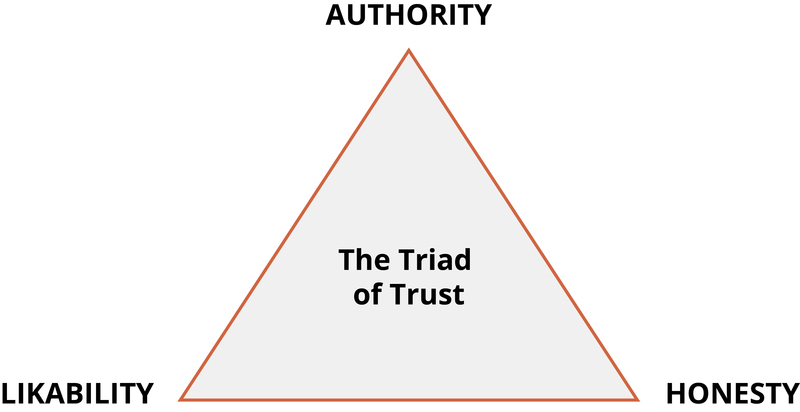On the previous page, we discussed that the motivation to reduce cognitive dissonance leads us to change our attitudes, behaviors, and/or cognitions to make them consistent. However, there are other ways people become motivated to change their behavior, such as through the act of persuasion.
persuasion
Persuasion is the process of changing our attitude toward something based on some kind of communication. Much of the persuasion we experience comes from outside forces. How do people convince others to change their attitudes, beliefs, and behaviors? What communications do you receive that attempt to persuade you to change your attitudes, beliefs, and behaviors?

How to Change an Attitude: The Yale Attitude Change Approach
The topic of persuasion has been one of the most extensively researched areas in social psychology (Fiske et al., 2010). During the Second World War, Carl Hovland extensively researched persuasion for the U.S. Army. After the war, Hovland continued his exploration of persuasion at Yale University. Out of this work came a model called the Yale attitude change approach, which describes the conditions under which people tend to change their attitudes. What, or who, do you think could convince you to change an attitude that you hold?
Hovland found that certain features of the source of a persuasive message, the content of the message, and the characteristics of the audience will influence the persuasiveness of a message (Hovland, Janis, & Kelley, 1953).
#1: The Source
Features of the source of the persuasive message include the credibility of the speaker (Hovland & Weiss, 1951) and the physical attractiveness of the speaker (Eagly & Chaiken, 1975; Petty, Wegener, & Fabrigar, 1997). Thus, speakers who are credible, or have expertise on the topic, and who are deemed as trustworthy are more persuasive than less credible speakers. Similarly, more attractive speakers are more persuasive than less attractive speakers. The use of famous actors and athletes to advertise products on television and in print relies on this principle. The immediate and long-term impact of the persuasion also depends, however, on the credibility of the messenger (Kumkale & Albarracín, 2004).
The Source and the Triad of Trustworthiness
Effective persuasion requires trusting the source of the communication. Studies have identified three characteristics that lead to trust: perceived authority, honesty, and likability.

Authority: we have a tendency to trust those viewed to be in authority positions, though this can be problematic for several reasons. First, even if the source of the message is a legitimate, well-intentioned authority, they may not always be correct. Second, when respect for authority becomes mindless, expertise in one domain may be confused with expertise in general. To assume there is credibility when a successful actor promotes a cold remedy, or when a psychology professor offers his views about politics, can lead to problems. Third, the authority may not be legitimate. It is not difficult to fake a college degree or professional credential or to buy an official-looking badge or uniform.
Honesty: If a person or company is viewed as honest, they can be easily trusted. This becomes a mental shortcut to help us sift through large volumes of information, signaling that we are in safe territory.
Likability: More than any single quality, we trust people we like. The mix of qualities that make a person likable is complex and often does not generalize from one situation to another. One clear finding, however, is that physically attractive people tend to be liked more. In fact, we prefer them to a disturbing extent: various studies have shown we perceive attractive people as smarter, kinder, stronger, more successful, more socially skilled, better poised, better adjusted, more exciting, more nurturing, and, most important, of higher moral character. All of this is based on no other information than their physical appearance (e.g., Dion, Berscheid, & Walster, 1972).
#2: The Message
Features of the message itself that affect persuasion include subtlety (the quality of being important, but not obvious) (Petty & Cacioppo, 1986; Walster & Festinger, 1962); sidedness (that is, having more than one side) (Crowley & Hoyer, 1994; Igou & Bless, 2003; Lumsdaine & Janis, 1953); timing (Haugtvedt & Wegener, 1994; Miller & Campbell, 1959), and whether both sides are presented. Subtle messages are more persuasive than direct messages. Arguments that occur first, such as in a debate, are more influential if messages are given back-to-back. However, if there is a delay after the first message, and before the audience needs to make a decision, the last message presented will tend to be more persuasive (Miller & Campbell, 1959).
#3: The Audience
Features of the audience that affect persuasion are attention (Albarracín & Wyer, 2001; Festinger & Maccoby, 1964), intelligence, self-esteem (Rhodes & Wood, 1992), and age (Krosnick & Alwin, 1989). In order to be persuaded, audience members must be paying attention. People with lower intelligence are more easily persuaded than people with higher intelligence; whereas people with moderate self-esteem are more easily persuaded than people with higher or lower self-esteem (Rhodes & Wood, 1992). Finally, younger adults aged 18–25 are more persuadable than older adults.